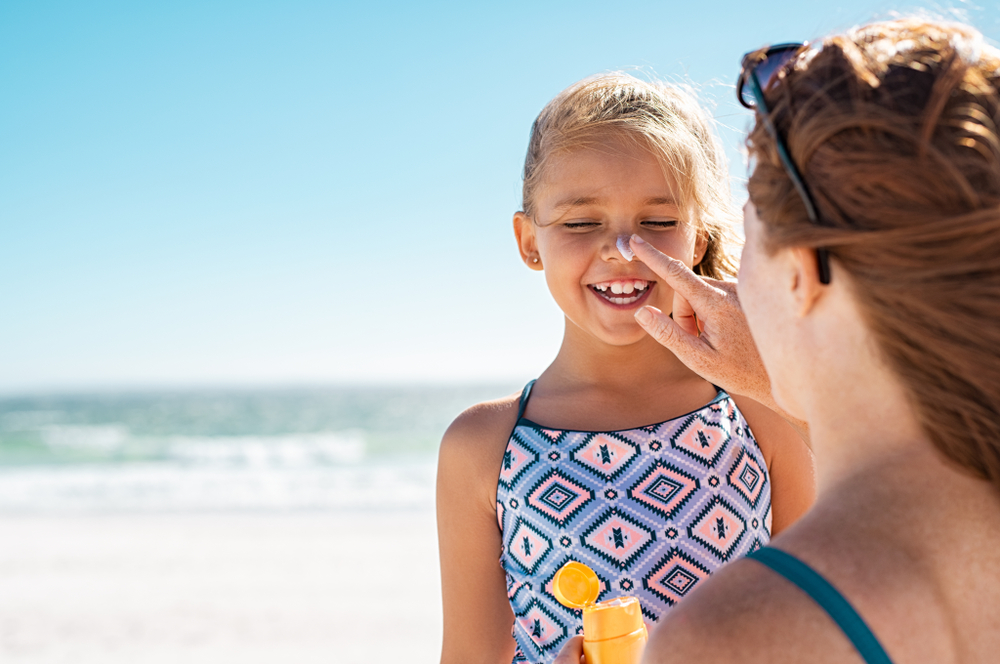As the seasons change and the sun’s rays become more inviting, it’s essential to remember the importance of protecting our skin from harmful ultraviolet (UV) radiation. Sun protection isn’t just about avoiding sunburns; it’s about safeguarding our skin health in the long term. This blog from AIM Group in NY explores the significance of sun protection, the role of SPF, and how you can effectively protect your skin from UV damage.
The Importance Of Sun Protection
Sun exposure is a leading cause of skin damage and increases the risk of skin cancer, including melanoma, the most deadly form of skin cancer. UV radiation from the sun comes in two forms: UVA and UVB. Both types can cause skin damage, but they affect the skin differently. UVA rays penetrate deep into the skin and are primarily responsible for aging and long-term damage, while UVB rays affect the surface and are the primary cause of sunburn. Both types contribute to the development of skin cancer.
Apart from the risk of cancer, prolonged sun exposure can lead to premature aging, characterized by wrinkles, age spots, and a loss of skin elasticity. Thus, protecting your skin from the sun isn’t just a matter of aesthetics; it’s crucial for your overall health and longevity.
Understanding SPF: What Does It Mean?
Sun Protection Factor (SPF) is a measure of how well a sunscreen will protect skin from UVB rays, the kind of radiation that causes sunburn and contributes to skin cancer. SPF numbers can range from as low as 2 to as high as 100. The number indicates how much longer it takes for the skin to redden with the sunscreen applied compared to unprotected skin. For example, if you use an SPF 30 sunscreen, it would take 30 times longer for your skin to burn than if you weren’t wearing any sunscreen.
Here’s a quick breakdown:
- SPF 15 blocks about 93% of UVB rays.
- SPF 30 blocks approximately 97%.
- SPF 50 blocks about 98%.
- SPF 100 blocks about 99%.
It’s important to note that no sunscreen can block 100% of UV rays. Also, higher SPF numbers don’t mean you can stay in the sun longer without reapplying. They provide a marginally higher level of protection, but they don’t last longer than lower SPF formulas.
Choosing The Right Sunscreen
When selecting a sunscreen, consider the following factors:
1. Broad Spectrum Protection: Ensure the sunscreen offers broad-spectrum protection, which means it protects against both UVA and UVB rays.
2. Water Resistance: If you plan to swim or sweat, choose a water-resistant sunscreen. This doesn’t mean it’s waterproof, so reapplication is necessary.
3. SPF Rating: An SPF of at least 30 is recommended for daily use. Higher SPFs can be beneficial for prolonged outdoor activities.
4. Formulation: Sunscreens come in various forms, including lotions, creams, gels, sprays, and sticks. Choose one that suits your skin type and personal preference. For instance, creams are often best for dry skin, while gels and sprays can be preferable for oily skin or hard-to-reach areas.
Applying Sunscreen Correctly
Proper application is crucial for sunscreen to be effective. Here are some tips:
- Quantity: Apply about one ounce (a shot glass full) to cover your entire body. Don’t forget areas like the ears, neck, feet, and the back of your hands.
- Timing: Apply sunscreen at least 15 minutes before going outside to allow it to absorb into the skin.
- Reapplication: Reapply every two hours, or more often if swimming, sweating, or toweling off.
- Layering: Don’t forget to layer your sun protection. Use lip balm with SPF, wear UV-blocking sunglasses, and consider clothing with built-in sun protection (UPF-rated fabrics).
Beyond Sunscreen: Additional Sun Safety Tips
Sunscreen is a critical component of sun protection, but it’s not the only measure you should take. Here are additional strategies to protect your skin:
1. Seek Shade: Whenever possible, stay in the shade, especially between 10 a.m. and 4 p.m. when the sun’s rays are strongest.
2. Wear Protective Clothing: Long-sleeved shirts, pants, and wide-brimmed hats provide additional protection. Look for clothing with an Ultraviolet Protection Factor (UPF) for added security.
3. Avoid Tanning Beds: Tanning beds emit UVA and UVB radiation, which can increase the risk of skin cancer and cause premature aging.
4. Be Mindful Of Reflections: Water, sand, snow, and concrete can reflect UV rays, increasing your exposure. Extra precautions are needed in these environments.
Protecting your skin from the sun is a vital part of maintaining your overall health and well-being. By understanding the role of SPF and incorporating comprehensive sun protection strategies into your daily routine, you can reduce your risk of skin damage and skin cancer. Remember, the best sunscreen is the one you use correctly and consistently. So, slather on that SPF, wear your sun-protective gear, and enjoy the sun safely!
AIM Group Offers Primary Care & House Calls In East Hills, NY
At Advanced Internal Medical Group in East Hills, NY we have 40 years of experience providing care with over 20 services in primary care, house call appointments, and more. To learn more about any of our services, call 516-352-8100 to speak with one of our team members.

